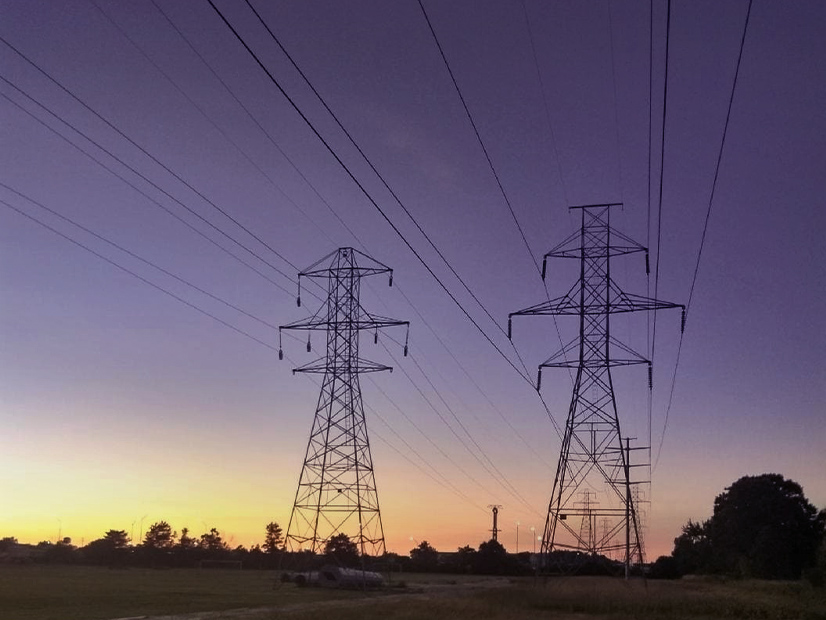New England stakeholders continued discussion on potential changes to ISO-NE’s forward capacity market (FCM), debating the merits of moving to a prompt and seasonal capacity market at the NEPOOL Markets Committee (MC) on Monday.
ISO-NE declined to endorse any specific market changes, but solicited feedback and furthered the discussion on market alternatives initiated at the June Participants Committee meeting (See ISO-NE Considers Major Capacity Market Changes.) The RTO is facing a deadline to figure out how to proceed for the 2028/29 Capacity Commitment Period, the auction for which is scheduled for February 2025.
“By September 2023, ahead of the pre-auction process for FCA [Forward Capacity Auction] 19, the ISO must decide on the timing and scope for CCP19,” Tongxin Zheng, ISO-NE director of advanced technology solutions, told the MC.
For FCA 19, the RTO laid out the options of proceeding with the auction business-as-usual, delaying the auction until 2026 to incorporate the ongoing Resource Capacity Accreditation (RCA) project or delaying the auction until early 2028 while moving to a prompt and seasonal auction.
Looking at the long-term outlook for the region’s capacity market, ISO-NE presented some potential pros and cons of adopting prompt and seasonal market changes. For a prompt market, ISO-NE said the benefits would include improving the accuracy of forecasts, requiring projects to be operational to enter the auction and eliminating several “challenging elements of auction administration,” such as non-commercial financial assurance and annual reconfiguration auctions.
“A prompt construct can improve the accuracy by which we estimate resource adequacy (demand) and resource accreditation (supply) relative to the current forward construct,” ISO-NE said. “However, the potential improvements are a function of what ‘prompt’ means in practice.”
Meanwhile, ISO-NE said it anticipates some drawbacks inherent to moving to a prompt market. These include making auction results less important for the long-term entry and exit decisions of generators, increasing capacity price volatility and giving less time for the RTO and market participants to react to the auction’s outcomes.
Pete Fuller of Autumn Lane Energy Consulting told RTO Insider that new changes must consider impacts on new resources, especially within the context of the clean energy transition.
“In the current debate about a prompt capacity market, we should think very carefully about whether a prompt market will support the level and kinds of new entry that will be needed for the decarbonization transition as state-backed contracting is phased out,” Fuller said, noting that the current FCM was designed to help provide new entrants with some degree of price certainty several years out.
“While current practice in the region relies much more heavily on state-backed contracts for entry decisions (particularly for offshore wind projects) than on the markets, that may not always be the case, as suggested by Massachusetts’ recent work to explore the Forward Clean Energy Market concept,” Fuller added (See New England Stakeholders Discuss Clean Energy Market Mechanisms.)
Some stakeholders, however, view the lack of a years-in-advance capacity commitment requirement as a benefit for developing new projects.
“The uncertain development timeframes for a growing share of new resources, including offshore wind, causes the FCM to create inefficient financial risk for new resources that may become an economic barrier for new investment,” said Pallas LeeVanSchaick of Potomac Economics.
LeeVanSchaick also said the current FCM structure can push some existing units to retire earlier than they should.
For older, existing units, “unexpected issues such as significant equipment failure can compel them to buy back their capacity supply obligation at great cost and this risk may cause some resources to retire prematurely,” LeeVanSchaick said. “A prompt market facilitates more efficient retirement decisions because the uncertainty regarding the condition and availability of older units is much lower at the time of the auction.”
Under the current system, many older resources will simply run until something breaks, instead of scheduling the retirement in an orderly fashion, said Brett Kruse of Calpine.
“Some owners will operate the generator only during very high-priced periods until the unit or a major component has a major maintenance issue, and then they’ll decide that it does not make financial sense to allocate sufficient capital to repair the plant,” Kruse said. “They’ll just retire it, and that’s likely to be the way that most of the older plants eventually exit the market.”
ISO-NE has put forward a prompt market and a seasonal market as complimentary, but has not ruled out any options, including implementing just one of the two major changes.
Contemplating the benefits of a seasonal market, ISO-NE said a seasonal market could help the RTO do a better job modeling resource constraints and would allow suppliers to make offers reflecting their differing seasonal capabilities.
“A seasonal construct would allow for a more precise delineation of resource adequacy and resource accreditation values within a given annual delivery period,” ISO-NE said.
The RTO also asked stakeholders for input on whether it would be best to run seasonal auctions sequentially or concurrently. Kruse said that holding an integrated annual seasonal auction would help generators ensure adequate annual revenue.
“It’s important that the seasons, whether it is two or four, together provide sufficient annual capacity revenue to generators regardless of their seasonal value,” Kruse said. “Plant staffs, maintenance expenses and so forth are annual costs, so the totality of the seasons need to total up much like today’s annual market does, and having an integrated, annual view once a year for all seasons makes sense.”
DASI approval
The MC also recommended the approval of ISO-NE’s Day-Ahead Ancillary Services Initiative, which is intended to fill any energy gaps between the supply procured in ISO-NE’s day-ahead market and the RTO’s forecast real-time load (See ISO-NE Plans 2025 Launch for Day-Ahead Ancillary Services Initiative.) The initiative will go to the NEPOOL Participants Committee for a vote on Aug. 3.



